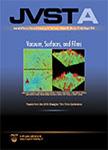版权所有:内蒙古大学图书馆 技术提供:维普资讯• 智图
内蒙古自治区呼和浩特市赛罕区大学西街235号 邮编: 010021

作者机构:Department of Computing Science Division Microrobotics and Control Engineering CvO University of Oldenburg Ulhornsweg 84 26129 Oldenburg Germany Fraunhofer IWM Halle Walter-Hülse-Strae 1 06120 Halle Germany
出 版 物:《Journal of Vacuum Science and Technology B: Microelectronics and Nanometer Structures》 (J Vac Sci Technol B Microelectron Nanometer Struct)
年 卷 期:2009年第27卷第2期
页 面:958-963页
核心收录:
主 题:Atomic force microscopy
摘 要:Cantilever vibration modes beyond the first harmonic of the standard flexural vibration mode were intensely explored in atomic force microscopy (AFM) during the past years. One example for this development is the usage of the torsional resonance mode. Further, the lateral bending mode was investigated and applied in AFM imaging and measurement. Here, the authors report on an extraordinary resonance mode of a cantilever chip system. In this mode the cantilever performs flexural as well as torsional movements. The mode was investigated in detail by scanning laser-Doppler vibrometry. It was found that there exists an intermediate stripelike region between the cantilever and the chip, which significantly contributes to the mechanical vibrations. In addition simulations using the finite-element method were performed to explore possible natural modes of the chip cantilever system. Nanomachining was performed on samples in a highly efficient manner with help of the above described resonance mode. The atomic force microscope could be specialized for material processing tasks on the micro- and nanometer scales utilizing this resonance mode. © 2009 American Vacuum Society.